A SAMI FINDING BACK TO HIS ROOTS IN MONGOLIA
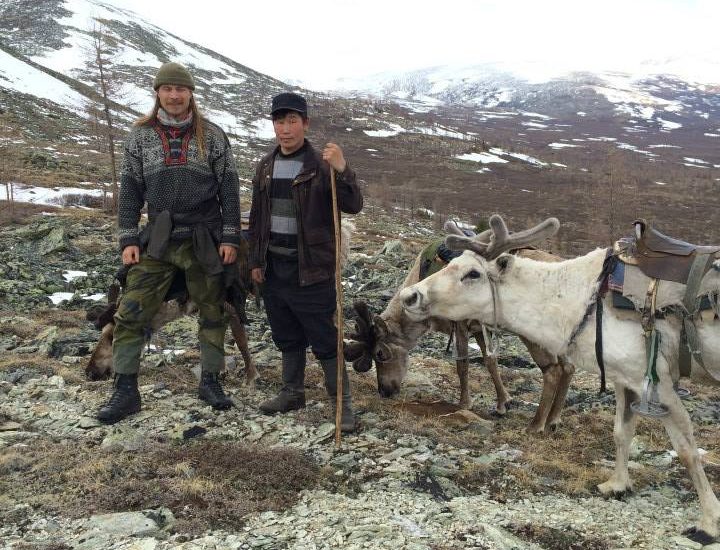
 You are Reading..
You are Reading..
A SAMI FINDING BACK TO HIS ROOTS IN MONGOLIA
Since I was a kid I had a dream to go to Mongolia and Siberia, to get to know the nature there, meet the shamans and ride on reindeers (they are bigger there). Finally the opportunity came, a few years ago. For Mongolia.
After landing in Ulan Batar I quickly realized that traveling in Mongolia is quite difficult, at least if you dont speak the language. And I wanted to travel far, to the reindeer people by the Siberian border. But there I was standing next to a busy street in the capital Ulan Batar, scratching my head. Then I remembered my Hungarian friend now living in the Peruvian Amazon without road connection since many years. He had spoken about a Mongolian friend, that spoke english, so I sent my fiend a message on FB, although he sometimes spends over a month in the jungle without coming in to town for checking messages. This time however miraculously I got answer right away, short like the communication with my friends usually is. Call this number, tell him your my friend.
So I did and got invited for lunch. The Mongolian guy spoke english and worked as a guide but was not familiar with the remote tribe the Dukha people in the north consisting of only 300 people that I wanted to visit. When I showed him on a map, he concluded that it was a place very far away, very hard to get to and no roads towards the end. Also there would be language complications even for a mongol.
But I owe him a lot of gratitude because he was very helpful, started phoning around, pulling strings and going trough his contacts. Finally he said: “Ok, there is a family driving up to Mörön tomorrow thats where the road ends and it will take over 12 hours. The driver only speaks some words of english but knows your plan now and will continue the journey with you, help you rent a jeep for the next part of the journey (one day) and then horses for the last part, the day after that. All this for a quite reasonably price.”
The journey in jeep from Mörön was beautiful. Over the Mongolian grasslands, that wasnt as flat as I had imagined, there where a lot of hills, patches of forest and rivers that we had to cross. Late in the evening we arrived at the last house, belonging to a nomad family, where we slept. In the morning we rented horses from them and continued up the mountains, towards Siberia. This was in May so on one frozen mountain lake we had to turn the horses around because the ice was breaking up. Instead we had to find our way around it crossing an open river.
Arriving the camp of the Dukha people, the reindeer people, I rode straight up to one lavvu (or tepee). That happened to be the lávvu of the shaman and his family. We got to stay in a smaller lávvu next to them.
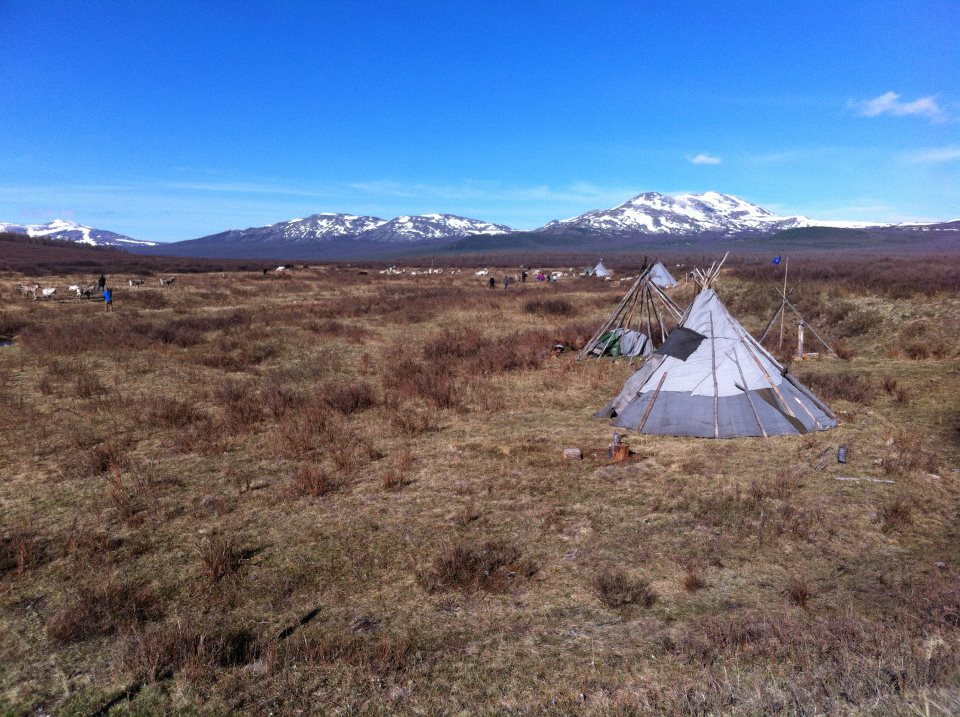
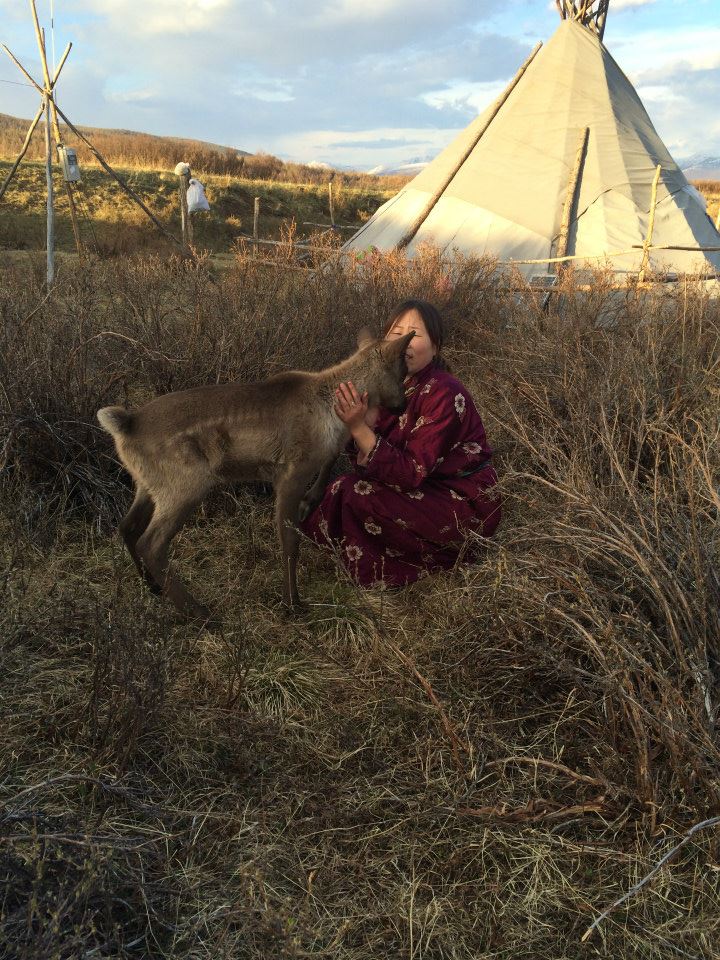
Now, Im calling them reindeer people, not reindeer herders, because they live very much like we Samis did 500 years ago, before we had developed the actual reindeer herding. A family has only about 20 reindeers that they use for transport and milk. While they live on hunting, mainly roe deer, moose and wild reindeer, they considered bear to have the best meet, something that I never heard before where I been traveling like North America, Greenland or at home. They only slaughtered their own reindeers when the reindeer started to lose their teeth sometime after the age of 12 years. The loss of teeth being a sign that the reindeer is about to die from old age.
Needless to say their relation with their reindeers are very close. In Sápmi a reindeer herding family needs about 400 reindeers to make a living from it. Some have well over a thousand reindeers. Everything is different here in sápmi, since about 500 year ago we where heavily taxed by the colonizing countrys, that led to the large scale reindeer herding that also by itself consumes large amounts of money to function, snowmobiles and ATVs are used a lot, we are also more integrated in the colonizing countrys, we have houses, cars and pay tax. But not long ago things where different, my father was born and raised in a lávvu, with no snowmobiles around, he used to tell me about how different the reindeers behaved when he was young, they where much more tame. Everything changed very fast for us in the 60s and 70s.
So for me this was in many ways like a trip back in time, to my roots. That first evening I took part in a shamanic ceremony, listening to the drumming of the shaman by the fire in their lávvu. He had recognised me as a shaman when he saw me, that was the reason for this ceremony, we wanted to learn about each other. And I really hope that we will meet again, then he would drink ayahuasca with me. Like he put it: You are like me but I can se that your way to work is different. We concluded that we need to learn more from each other.
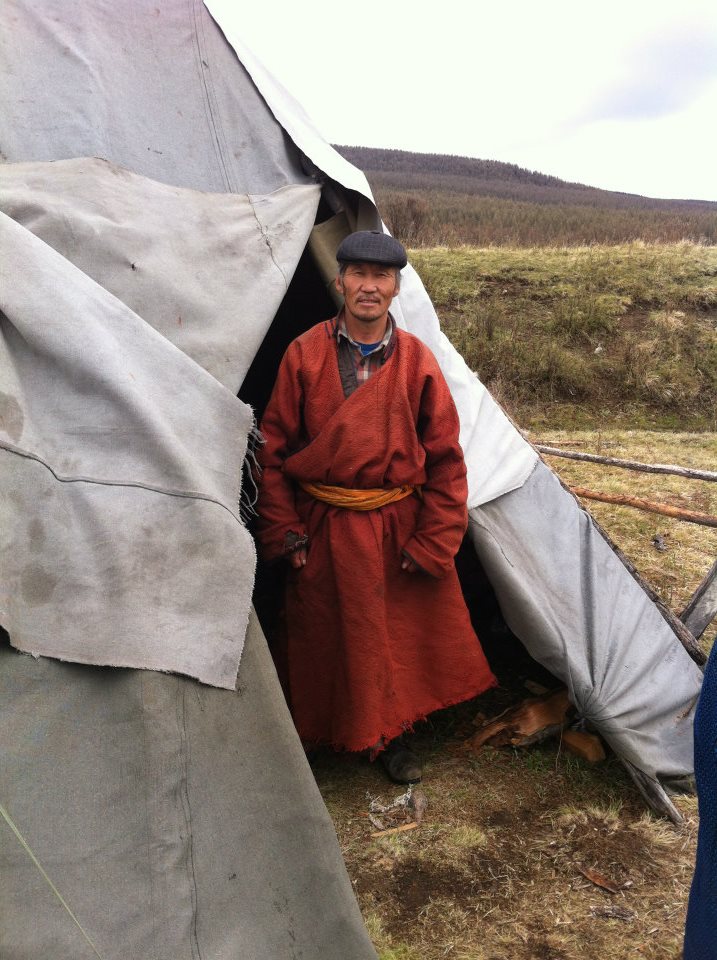
Mongolian shamans are somewhat more like mediums then what I am used to and they have elements found in some Caribbean practices, like controlled possession.
During my 10 days with the Dukha people I got many opportunities for reindeer riding, I always rode on the shamans white reindeer, that I – to their surprise never fell off. But according to me its way easier to ride on a reindeer then on a horse. An opinion that most people seem to disagree with. But the trott of a reindeer is so much smoother then that of a horse.
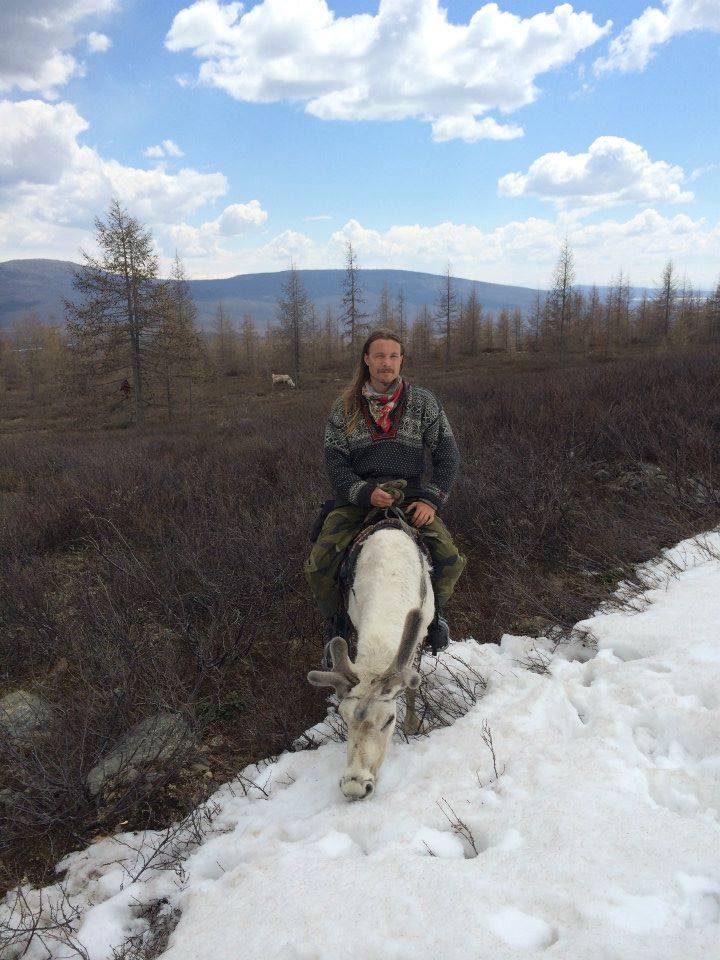
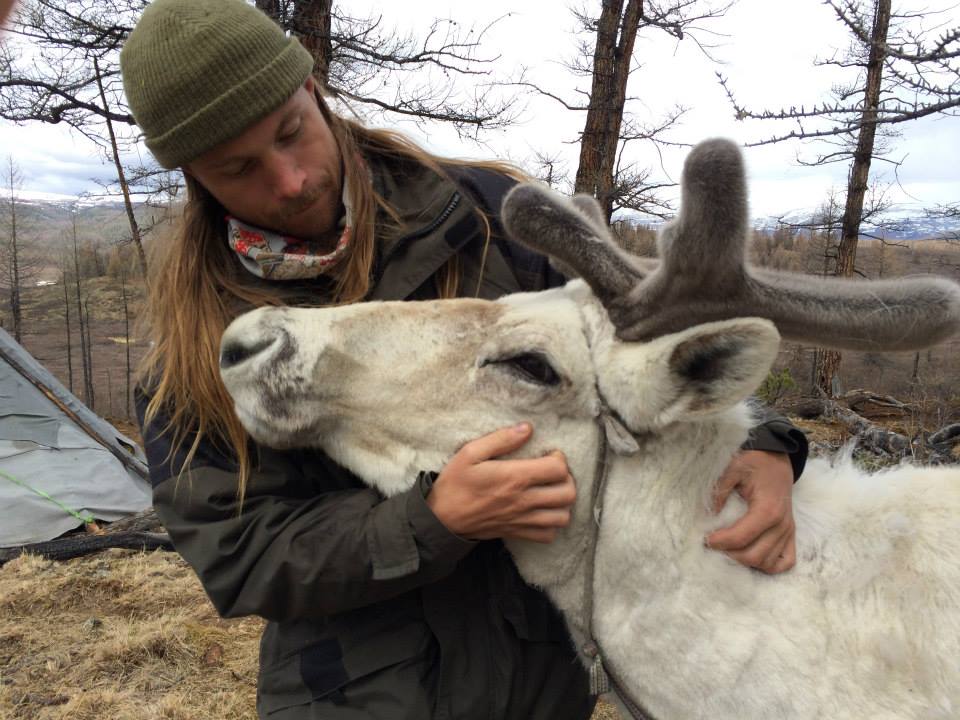
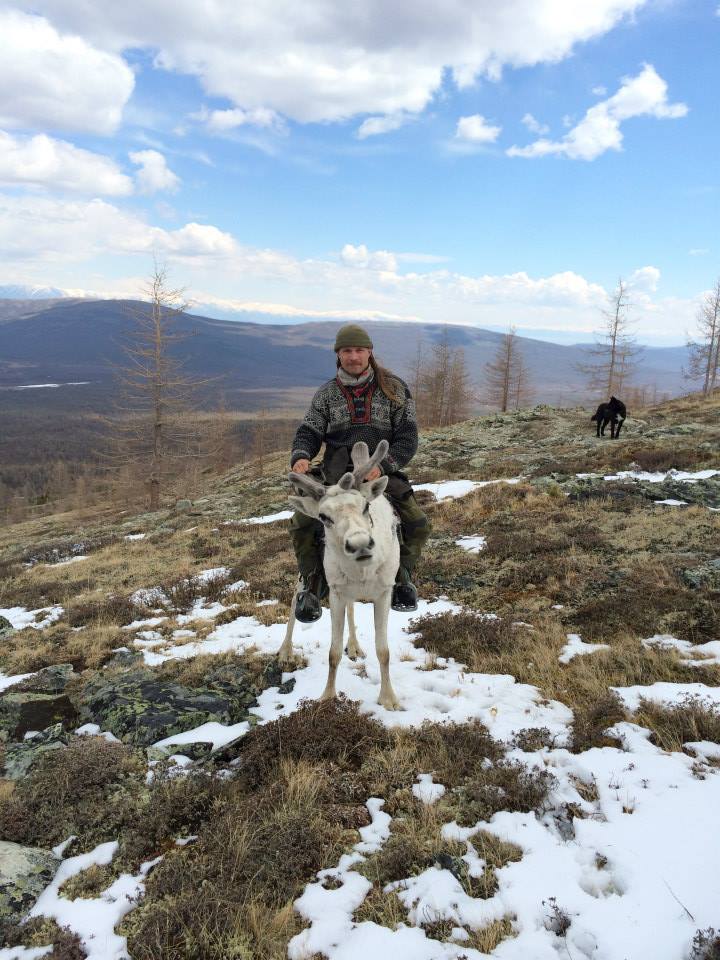
Another interesting thing I noticed was that the reindeers where unmarked, Samis mark their reindeers in the ears to see who it belongs to. I asked about that. They said they recognise them, their color, facial features and so on.
My conversations with the shaman where translated by the only person in the camp consisting of 14 lávvus that spoke english. A Mongolian woman that had been an exchange student in Colorado and later married a Dukha man, a hunter with reindeers. So with them I could also talk and learn about their life.
The main problems for the tribe where the wolves and the government thats trying to stop them from hunting in their land that is now declared a national park.
Every night all the reindeers where brought in to the middle of the camp, with the lávvus surrounding them to provide some protection for the reindeers. One night we all woke up because the dogs where barking and howling, it was the wolves trying to get the reindeers. So the wolves were always a very common topic to discuss. The loss of for example one reindeer trained for riding would be severe for a family.
At home (where we dont have wolves today) my family are more concerned with lynx, wolverine and bear, so I asked about that. They said that wolverine they hardly ever se, about lynx they just laughed and said that yes it can happen that a lynx kills a reindeer but its over 10 years since the last time it happened and they sad that the dogs would probably kill a lynx if it tried to get to close. Bears, yes they can go crazy sometimes but they also have the best tasting meat.
Siberian tigers and snow leopards none of them had encountered but they knew stories about encounters from grandparents that had already past away.
Wolves on the other hand was a serious problem.
Although the wolves also function like a pharmacy in Mongolian folk tradition. If you have a heart problem, then eat a wolf heart, and so on, liver, kidneys…
As the spring advanced we moved higher up in the mountains towards the Siberian border. Reindeers dont like heat. The border was another problem for the Dukhas. Their ancestors used to migrate across the border but the Sovjet Union and Mongolia put a stop to it. So some got closed in on the Mongolian side and some on the Russian side in the Tuva province. Some families where split because of this. Although it still happens that they cross the border while they hunt, I met a man that had been jailed because of this and was facing 20 years in Mongolian prison. He was very lucky though, his mother was a known shaman that had saved the life of a family member to the provincial governor. That got him out of prison, sometimes corruption can be a god thing.
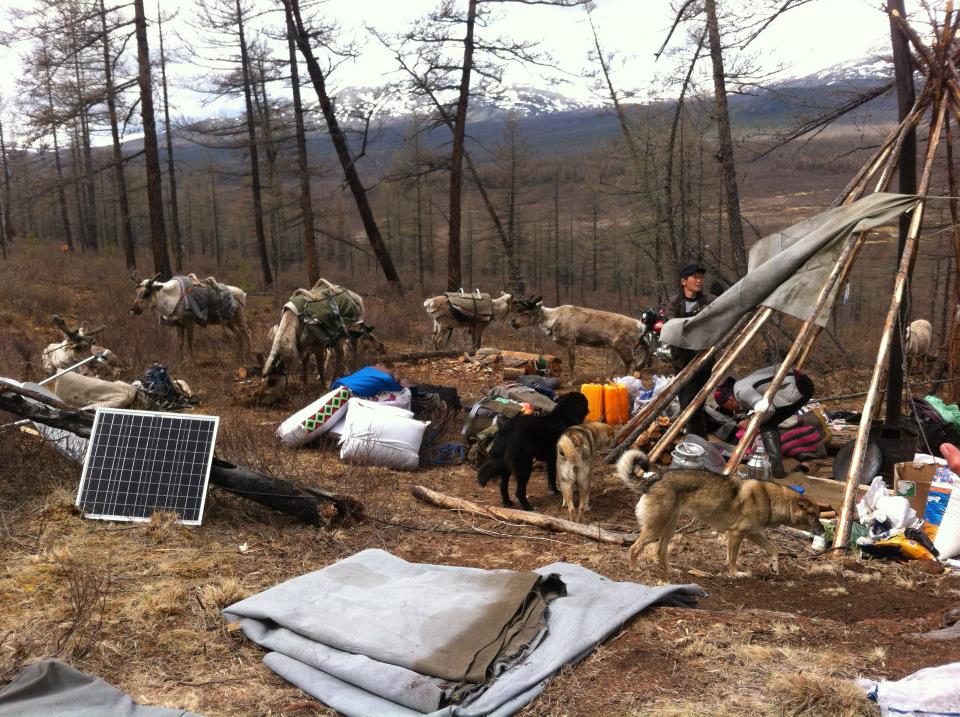
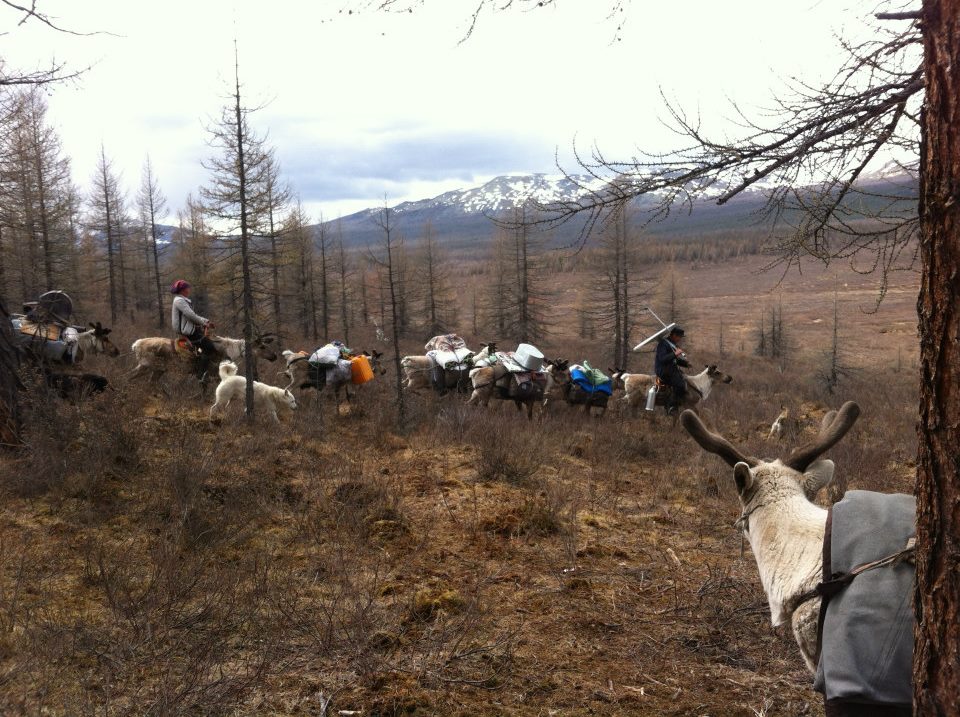
Well, my visit came to an end but I hope to se my friends there again some day and exchange more with the shaman. Here is another story from my travels.
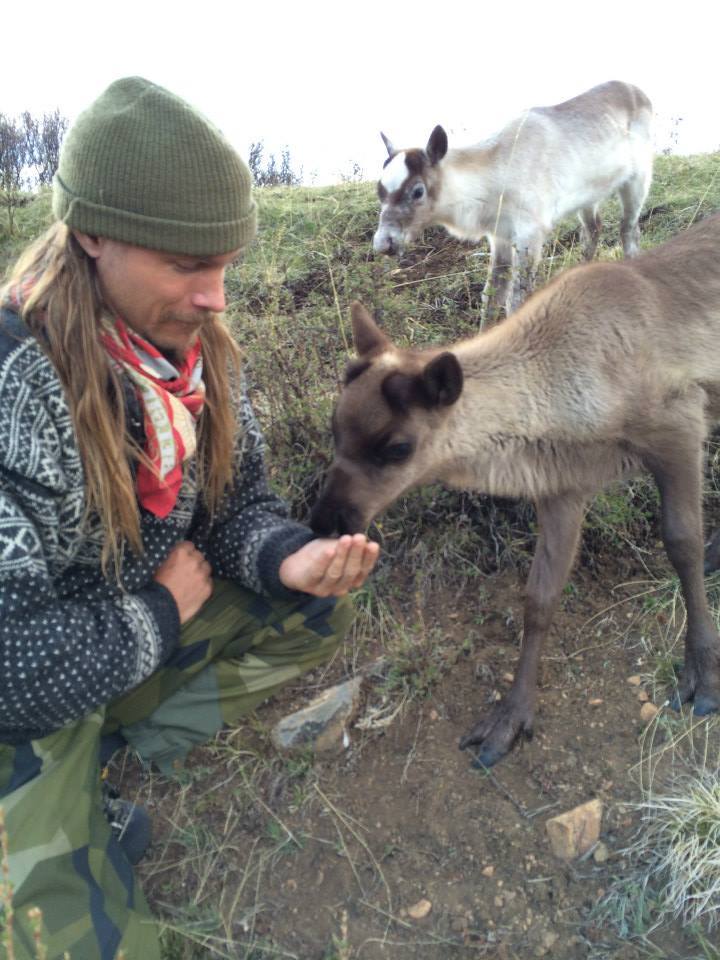
“The Horse boy” documentary was made shortly before my visit to the dukha people in Mongolia. The dukha people have two different herding districts. The west taiga and the east taiga and by coincidence I ended up in the same place as the family in the documentary. The shaman doing the healing in the documentary was hit by a stroke shortly after that. So his nephew had taken over the job and was the one I met with.
Also read : What and where is Sápmi. and “I am from Sápmi“.
“Shamanism – an introduction” and “Bieggaolmmái – an Interestin trainride“

What a beautiful adventure!